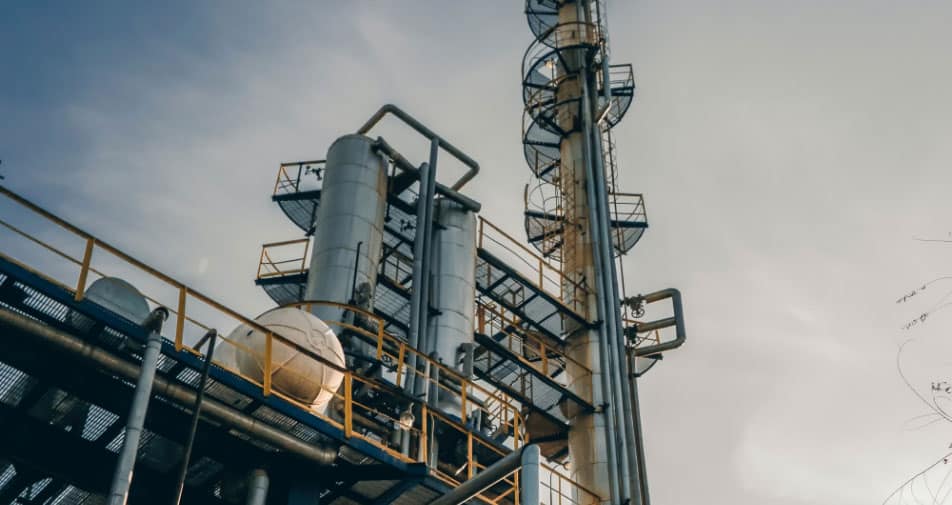Disruption is on the horizon for the global oil and gas industry, and it’s coming in the form of a methane tax. As global leaders gathered in Egypt for COP27, the focus was on slashing emissions of one of the worst polluting greenhouse gases. Methane is responsible for over a quarter[1] of today’s climate warming, and its concentration continues to increase. Fossil fuel extraction causes 35%[2] of global methane emissions, two-thirds of which come from the oil and gas sector. The regulatory and compliance climate is getting more complex, so it’s time for the industry to prepare.
The good news is that emissions from oil and gas can be abated. Some players are already acting with urgency and others are ready to join them with advanced leak detection and quantification. Today, new technology means reduction is cost-effective. From scientists to world leaders to the IMF, calls for methane fees are now commonplace. Indeed Norway, Europe’s biggest natural gas supplier, has already introduced a methane tax. Meanwhile, a methane waste emissions charge in the US will become effective in 2024 as part of the Methane Emissions Reduction Program included in the Inflation Reduction Act (IRA).
Success means staying ahead of the curve and spotting disruptive megatrends early in a rapidly changing global energy market. Given methane’s role in global warming and the need to curb emissions, it’s clear that methane fees are coming in markets worldwide.
How methane fees could be implemented
Norway has set the precedent for a methane tax. The country implemented a mandatory greenhouse gas tax on vented and fugitive methane emissions on offshore oil and gas installations. All operators on the country’s continental shelf are now required to report all methane emissions from their activities. For 2022, the government has implemented a tax rate of NOK 1.65 (US $0.16) per standard cubic meter of gas or liter of oil or condensate. This is equivalent to NOK 705 (US $66.54) per tonne of CO2 for the combustion of natural gas. For natural gas emissions, the tax rate is NOK 10.66 (US $1.01) per standard cubic meter.
In the U.S., the IRA includes the Methane Emissions Reduction Program, which will introduce a charge on oil and gas facilities that emit more than 25,000 metric tons of CO2 equivalent per year beginning in 2024. It will start at $900 per metric ton of methane reported for the calendar year of 2024, before rising to $1,200 in 2025 and $1,500 in 2026 and thereafter. As part of the IRA, royalties will be assessed for methane produced on federal lands and waters, including gas that is consumed or lost by venting, flaring or negligent releases during upstream operations.
International financial institutions are also increasingly backing the idea of methane fees to help curb emissions. In a report published in October, the IMF proposed introducing revenue-neutral ‘feebates’ for the extractives sector that apply fees on heavy polluters to subsidize cleaner producers. It argued that a methane fee is potentially the most efficient instrument for countries to utilize-it provides greater rewards for technological innovation than regulation and is also practical, as fees can be integrated into existing fiscal regimes.
Such a proposal could see methane taxes levied directly on emissions, with companies required to develop their own emission-metering capacity and to pay taxes based on their reported emissions with facilities subject to periodic government inspections and penalties for noncompliance with reporting requirements. ‘Feebates’ (which impose a sliding scale of taxes on firms with above-industry-average emission rates) and rebates to firms with below-average emission rates are both in play.
The IMF paper also proposes that countries with specific targets for methane emissions, such as Nationally Determined Contributions (NDCs), could align tax trajectories with these targets. Additionally, it suggests that in the future liability requirements introduced by countries could force companies to plug abandoned wells.
The measurement economy as a catalyst for emissions reduction
To align fossil fuel CO2 emissions with limiting warming to 2°C, methane emissions from extractives will need to be 50% lower by 2035[3]. With 125 countries having signed the Global Methane Pledge to cut global methane emissions by 30% by 2030, legislation in the oil and gas sector will be implemented to reach this target. Whether countries implement a methane fee or not, it is crystal clear that instruments will need to be utilized to scale back methane emissions, and companies that take leadership positions will be future-proofing themselves from disruption.
Real-time granular data is at the heart of reducing methane emissions. Fugitive leaks account for 30%[4] of methane emissions in the oil and gas sector. But we now have the tools and technology to detect and stop these leaks. Remote sensing technology can capture how much methane is being released into the atmosphere during production down to the part per billion. And robust technology ecosystems utilizing IoT devices, such as Project Canary’s SaaS dashboard, now report leaks every 60 seconds. This unprecedented granularity of data available in real-time has ushered in what we at Project Canary call “The Measurement Economy“.
We may not even know the true scale of the methane problem yet. A report by UNEP’s International Methane Emissions Observatory that calls for systematic measurement of emissions warns that methane emissions are all too often estimated using outdated emission factors based on simple calculations that are largely divorced from the realities of day-to-day operations.
Solving this problem requires better regulation, better data, and better reporting. As lawmakers begin to take steps towards stronger regulation, the measurement economy can give companies the precise data they need to measure and manage their methane emissions and ensure the highest level of sustainability in the production and transport of oil and gas. In fact, two of our clients, Southwestern Energy and Chevron, were singled out by the IMF report for their leadership.
Pressure for the oil and gas sector to curb methane emissions is coming from all directions – regulators, shareholders, consumers, employees, and environmental groups. While a methane fee for the oil and gas sector is already planned for the US, we can expect similar policies from other countries, given the scale of the problem and the urgency with which it must be addressed. Embracing the measurement economy can help steer oil and gas companies clear of icebergs and put them in a position to lead in a fast-changing market.
[1] https://www.unep.org/ar/node/30344
[2] https://www.imf.org/en/Publications/staff-climate-notes/Issues/2022/10/28/How-to-Cut-Methane-Emissions-525188
[3] https://www.imf.org/en/Publications/staff-climate-notes/Issues/2022/10/28/How-to-Cut-Methane-Emissions-525188
[4] https://www.imf.org/en/Publications/staff-climate-notes/Issues/2022/10/28/How-to-Cut-Methane-Emissions-525188


